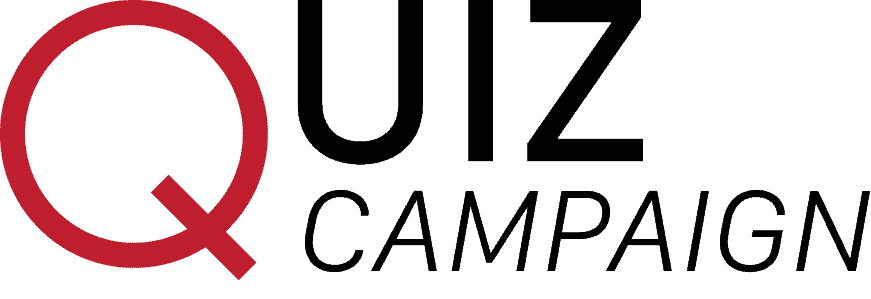You’ve a quiz concept all ready to rock and you’ve drafted your questions and answers.
What’s left is the effective autoresponder sequence to create.
The nurturing series that is crucial in accumulating trust – the relationship currency for any transaction to take place.
Why do you need an effective autoresponder sequence?
Because you need to nurture the relationship between you and your prospects. You need to create and set up a series of email content for the quiz subscribers. After a quiz-taker completes your quiz and agrees to give you the email address, the quiz-taker transforms into your email list subscriber. The sequence is initiated.
At regular intervals, you will send emails to your subscribers over a period of time. Regular emails that you’ve written beforehand.
In other words, you communicate with them. Just like fostering a friendship, you send texts or call your friend regularly to talk to them. This provides the golden opportunity for both of you get to know each other better.
That’s the hard work behind creating a long-lasting relationship with your customers and building up a loyal customer base for your business. Rather than constantly looking or searching for new customers, you want to develop a close-knitted relationship with those on your email list.
Similar to the initial dating process, you kickoff the bonding process immediately after your subscribers gave you their email addresses.
If done right, your email subscribers will turn into your most loyal customers, strong believers of you and your products. They will be your number ones fans – your strongest influencers to advocate and help grow your business.
How does an email sequence help you in this scenario?
There are various types of content sequences. Examples would include the on-boarding sequence, nurturing sequence, renewal sequence, follow up sequence, engagement sequence, conversion sequence, abandoned cart recovery sequence etc.
In this particular post quiz sequence, the primary goals are on-boarding, nurturing, engaging and the secondary goal is converting.
Imagine your subscriber doesn’t know about you, have no clue into what you do or how you can help them.
The initial three objectives of your sequence should revolve around these:
Self introduction and reminder
Congratulate them on taking the quiz and briefly mention their quiz results. Preferably include the results of the quiz again to keep it as a reminder in their inbox.
Introduce yourself to your new subscriber. In your indoctrination email, tell your new subscriber (a.k.a your lead) who you are exactly and what you stand for. For example, your backstory on your journey to your current services or products. The story you share have to be firmly linked to what you do and why you are the expert in this field. Including social proof or success story will also build up your credibility.
Link them to your social media profiles – those that you’re actively using. Wait a minute, they are on my email lists. Do I still need to get them to follow me? Yes, you should. If you want more opportunities to convert your email subscribers into returning customers, you have to leverage onto multiple ways to engage them.
Through different content channels, you’d be able to showcase and communicate various aspects of your services in creative ways rather than just an email. Don’t settle for either email or social media. Use them both together and allow them to build off each other.
Reiterate your expertise and solve their problems
In the second part of your sequence, center your messages on tips that enrich your lead’s knowledge or advice to solve a particular problem related to why the lead took the quiz in the first place.
Position yourself as an authority figure in this space and how your expertise would resolve the problems your lead (otherwise known also as your prospect) is facing.
Educate your audience as well and explain what are the available options to solve their problems and why your product or services should be one of their shortlisted solutions.
Well, what does a winning email campaign sequence comprise of?
These three parts are the key essentials for your effective autoresponder. Once your foundation has been set up properly, you’ll reap the benefits in the long run.
Firstly, you want to plan the goal of each email in advance.
Period. Each email itself is a golden opportunity to interact and engage and narrow the gap between you and your prospect.
Before you dive into writing the actual emails, plan out how long you want the sequence to be and the intention behind each singular interaction.
The goal of your first email is to interest them with your services/products and your uniqueness. Start off with congratulating the prospect of setting the wheels in motion through completion of the quiz. The quiz results itself have provided a set of actionable steps that the prospect can take to solve a particular problem.
A short bio of yourself plus social media hyperlinks should be included. Wrap up the email with an invitation to visit your website and your social media profiles to get a flavour of your personality and your content itself.
Secondly, personalize, personalize, personalize.
Make it as personable as possible. In each email, talk to your prospect as if you were to speak to a friend, discussing about their problems. Include dynamic content in your emails with references to the prospect’s answer profiles.
Recall, the prospect is considered close to cold traffic. When you refer back to the prospects’ answer profiles, you come across as more relatable and attentive. In laymen’s terms, you’ve been “listening”.
The answer profiles could align with a problem that was shared in the quiz or even a personal detail that was part of the quiz questions.
The more personalized an email is, the closer it is to a real life conversation.
Thirdly, you need a call to action at the end of each email.
A call to action for your email recipient. Get your subscribers to make a micro-commitment. It could be (but not limited to) a reply to a question or a click to read a piece of your old blog content (that’s relevant to them).
Joining your Facebook Group or watch one of your videos for a useful tip are also great engagement tactics.
A free discovery call with you is also another option to explore.
Construct a mixture of different call-to-action interactions in your content. They should all be set up to establish you as an authority in this area and the go-to-person to solve their problems.
Rather than leaving it up to chance, a good email together with a relevant call to action prompts the user naturally towards their next step.
You’ve a effective autoresponder. And you’re now ready to up your game.
Huh? You mean there’s more? Yeps. There’s more. A winning campaign is only the beginning. If you want to ace the game and beat your competitors, you have to think in terms of segmenting your (already effective) autoresponder sequences. MailChimp reported that open rate of segmented email campaigns is 14% higher than non-segmented emails.
Even though your email subscribers are new to you, there could be some of them who would be more likely to take action to solve their problem. On the other hand, there would be others who need multiple touch-points and engagement before deciding if they want to buy your products or services.
The underlying crucial ingredient here is timing. If you sense their interest in your products, reach out to them as soon as possible.
However, if your prospects are still sitting in the research phase and still need more convincing, keep patient. Continue to win them over with exclusive tips and tricks.
Score A+ for your autoresponder
Leveraging on one or more of the following three advance tips will take you to the A+ stage of effective autoresponder creation.
Combine interaction and consumption of website and email content
Going back to call to actions, if your lead clicks on the link to your website and perhaps visited your “Work With Me” page numerous times, you could trigger a special notification to yourself and see the pages your lead has visited.
Specific views of your services page implies interest in your service and you could send off a personal email to them.
Specifically, if they had a particular question in mind about your services, you could get them on a free discovery call to speak more.
If you’ve a sales team, this is when they need to get into action and close the gap.
Another instance would be they clicked through links in multiple emails about a particular tripwire offer without making a purchase. Consequently, a special offer or discount within a limited time could push for the sale.
The ability to move users between sequences based on their specific actions
You could have a straightforward segmented sequence based on the quiz results.
However, if the user clicked on a particularly useful link and left a comment on a blog post or if they reply to one of your emails, you can move them to a product promotion sequence, leading up to your product pitch.
You would further explain how your product would be pivotal to remove their pain.
Supposing they display a stronger interest or done prior in-depth research of their pain-point, we could reasonably assume a purchase decision is on the cards.
No doubt, you want to act on it and encourage them to take action.
The ability to score leads based on their engagement
For every email click-through or open, set up a lead scoring system to qualify your leads. Check in the scores in between the sequence and observe how your subscribers interact with your content.
A higher qualification score obviously indicates a stronger interest in your product. Presumably, they are open to finding out more while a lower score suggests a lower readiness to act.
Take action to contact those who have a higher engagement score.
Identifying the decisive factor to override any residual resistance towards a purchase would be the critical juncture to turn them into your customers.
For those who replied to any of those emails, set a higher priority score because an action to initiate communication demonstrates a stronger purchase intent.
Ultimately, an effective autoresponder sequence boils down to being helpful and approachable.
In your nurture emails, you can briefly mention about your products and services and link to your website and social media profiles. Just don’t make your products the spotlight of every email.
Share knowledge and practical information. They can be videos, audio, blog posts, podcasts, links to content on websites other than your own, and so on.
To sum up, your effective autoresponder needs to be doing this.
Provide value. Be helpful.
Provide Value. Be helpful.
You got it.
Make your prospects feel you care for them and it’s not all about the pitch and sales.
This winning approach will prove priceless in your long term strategy.

